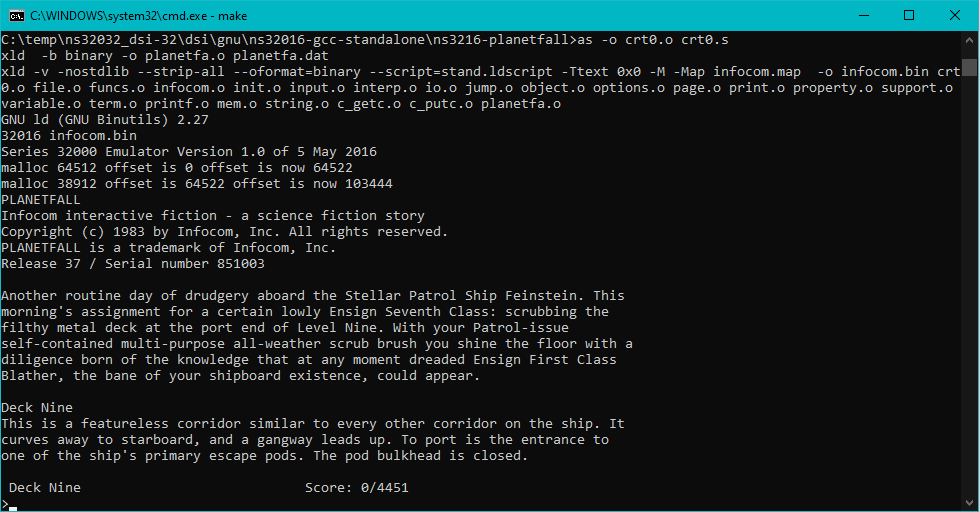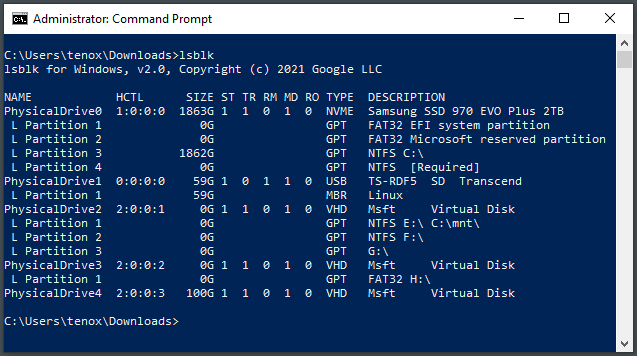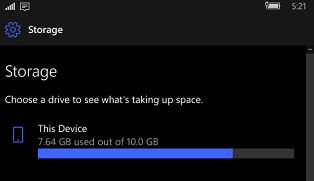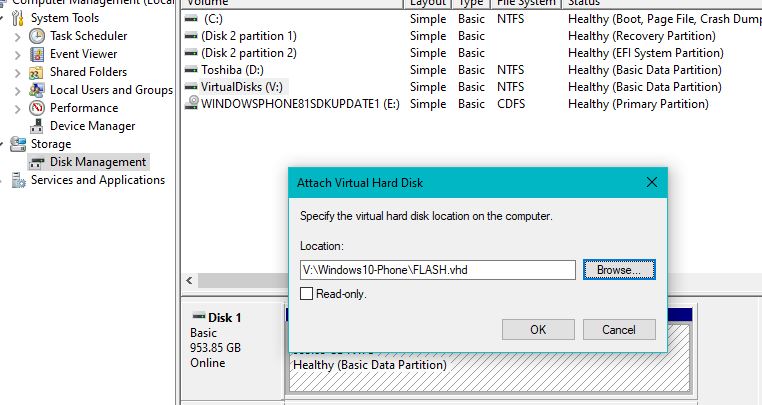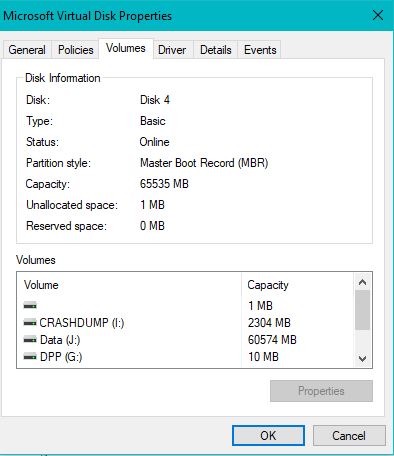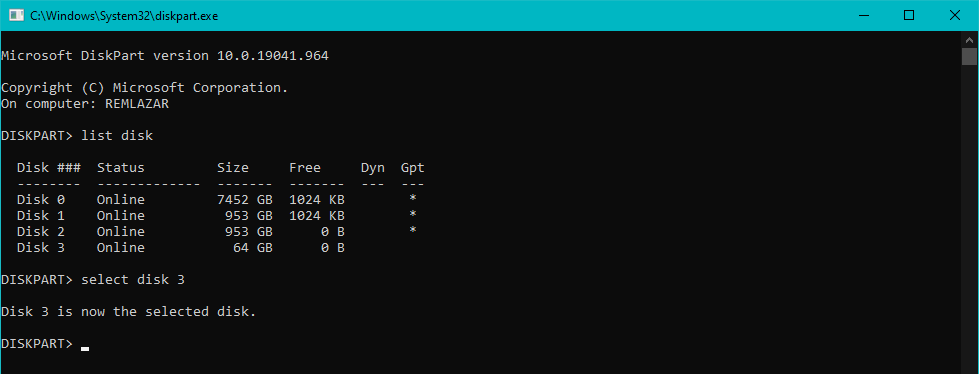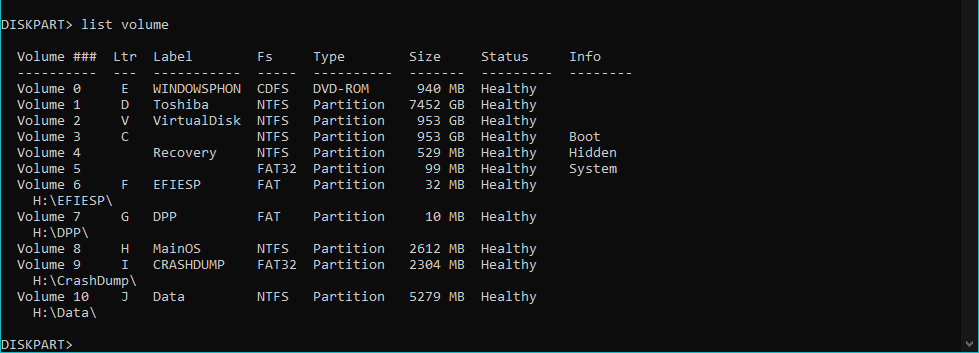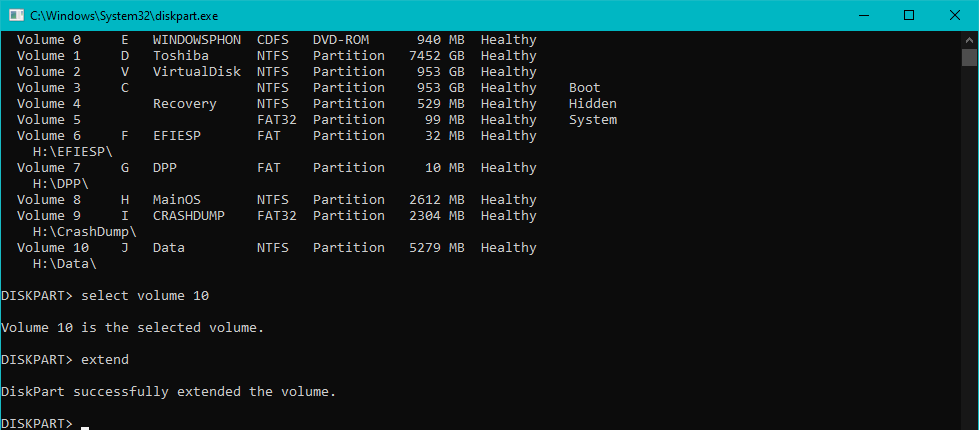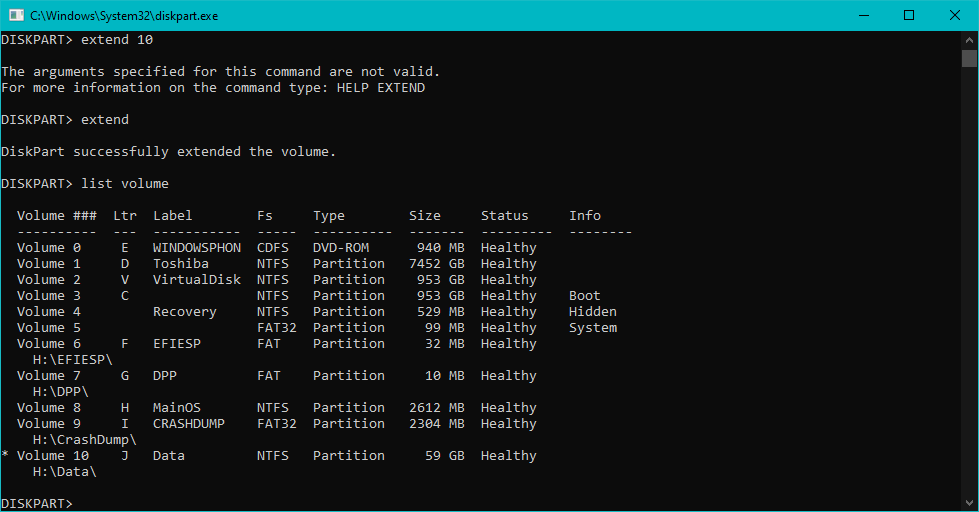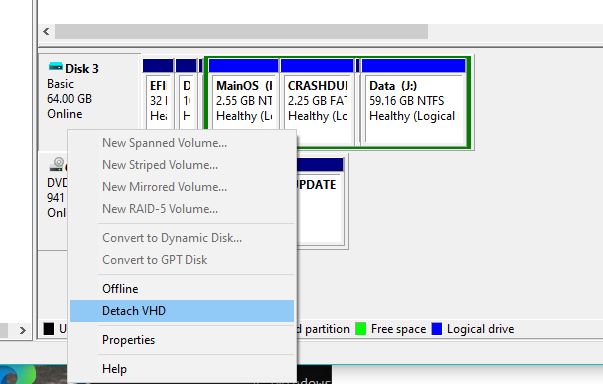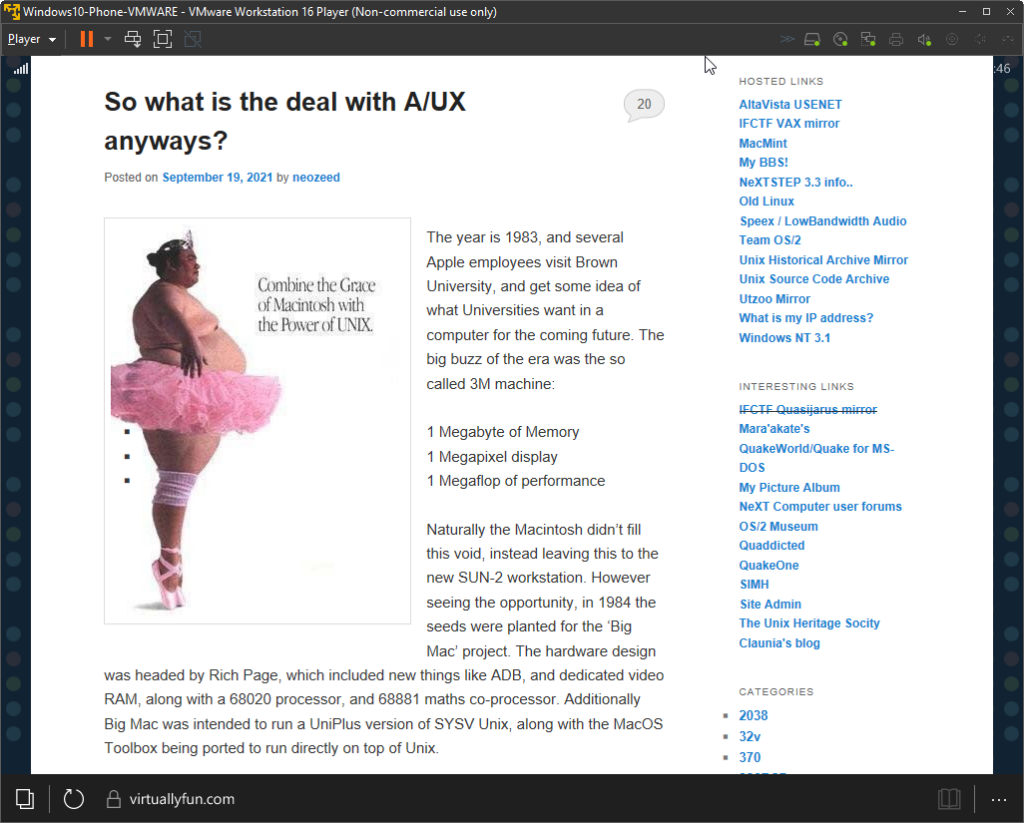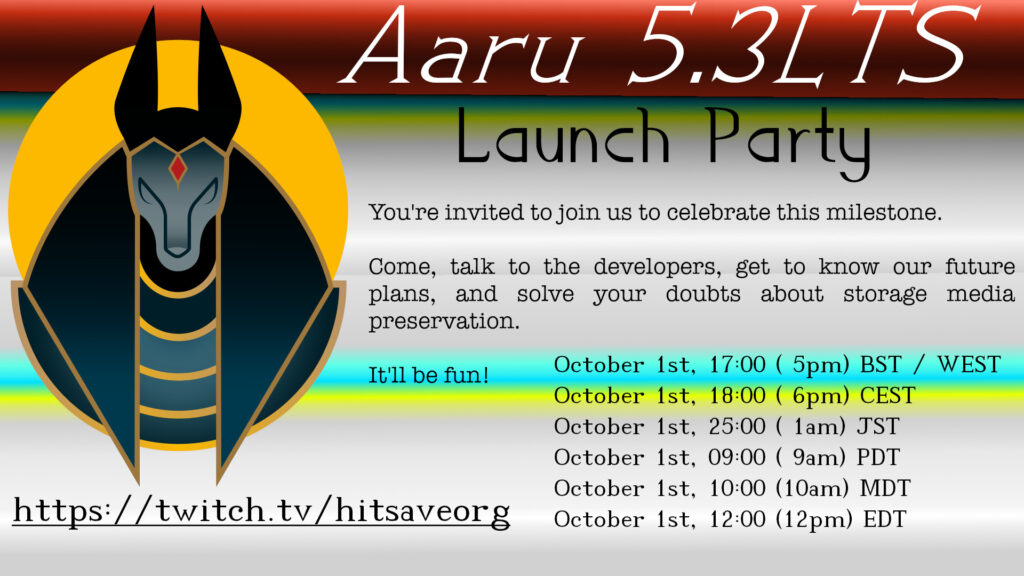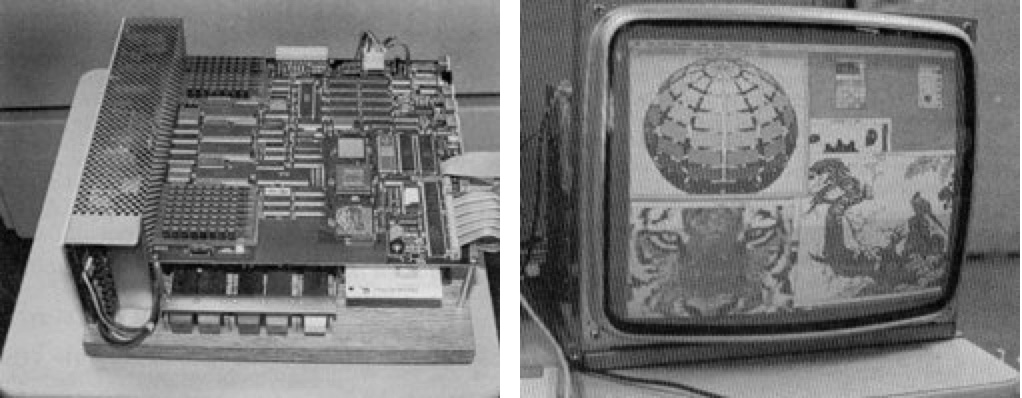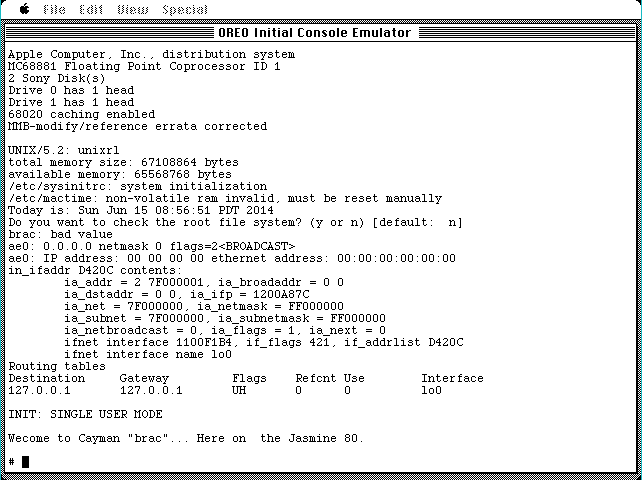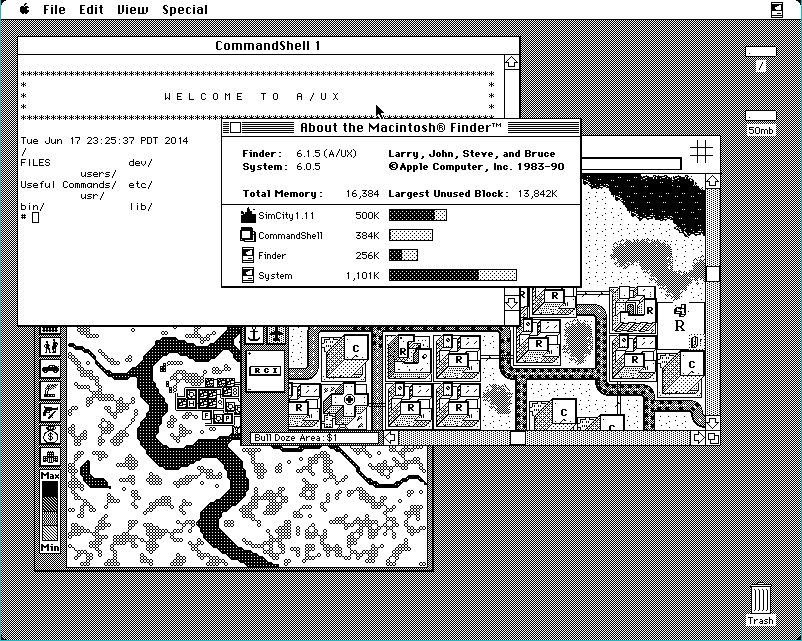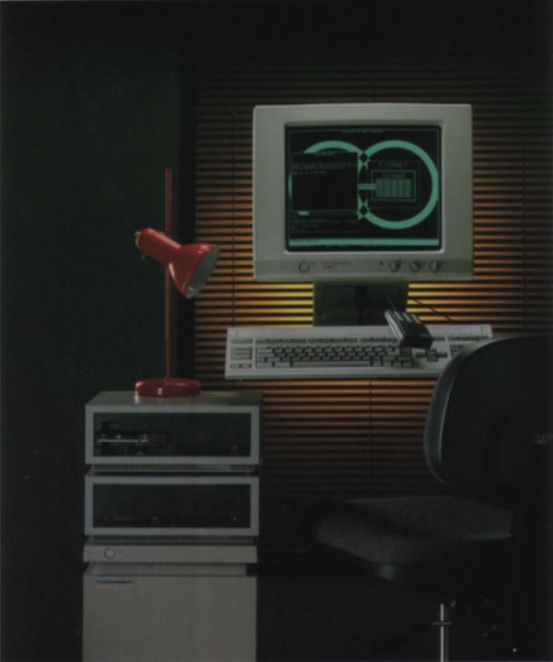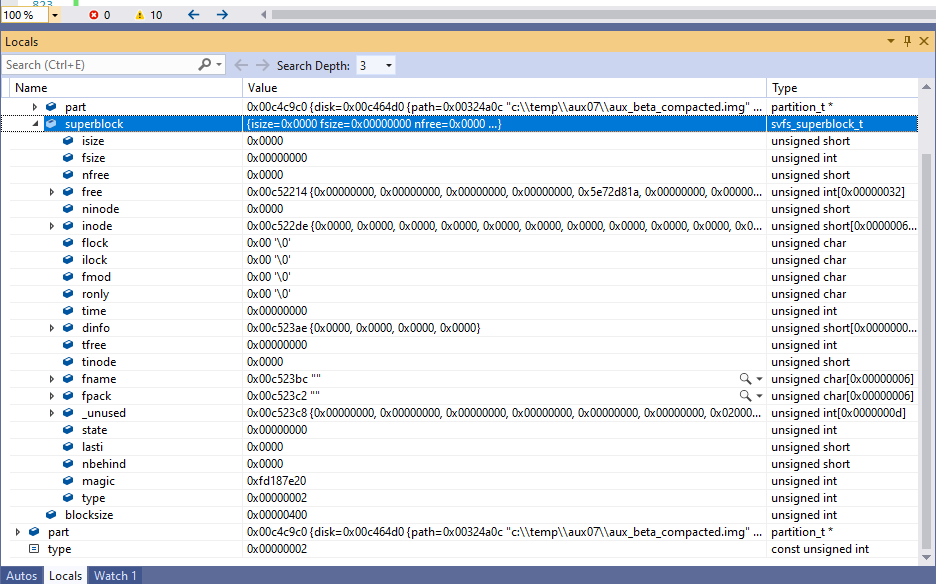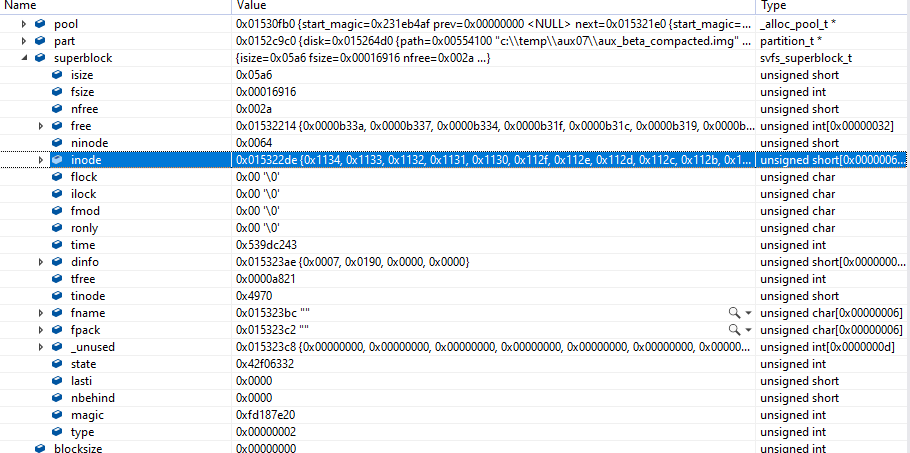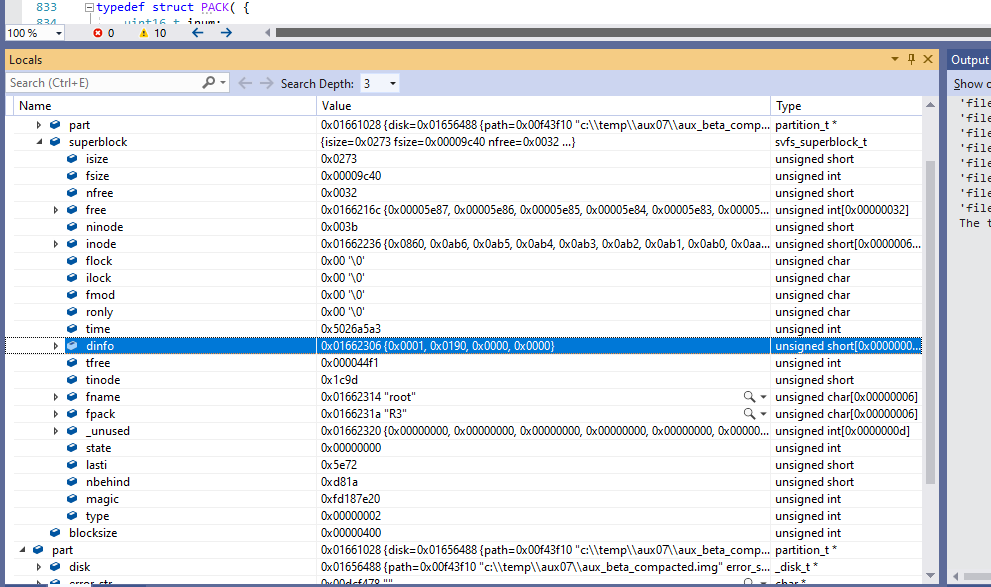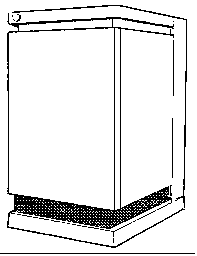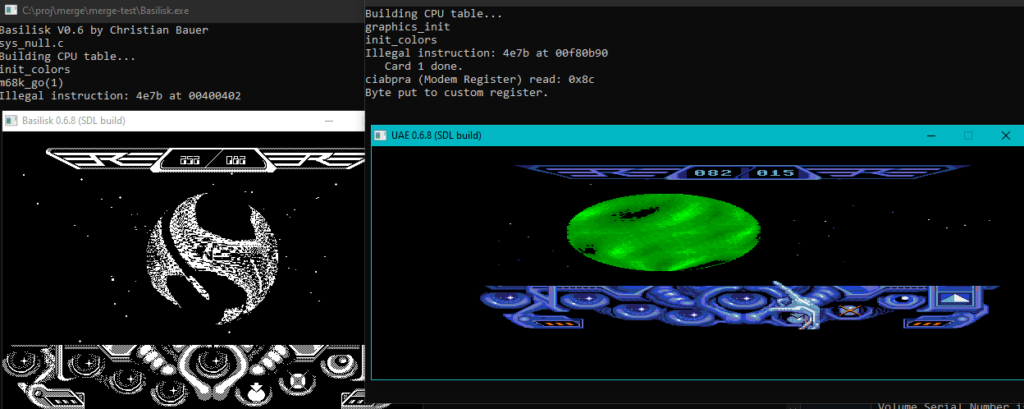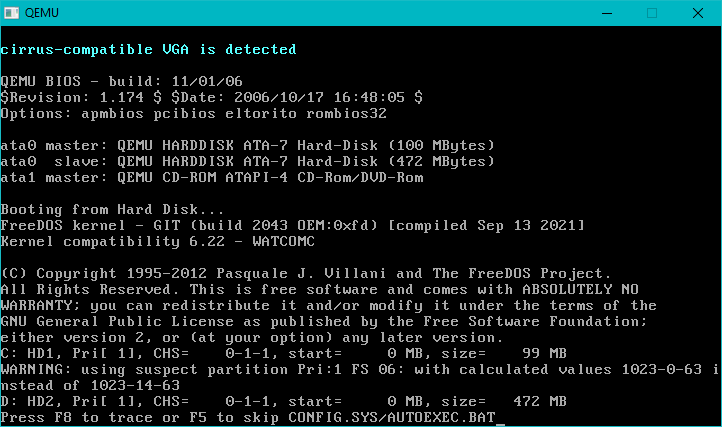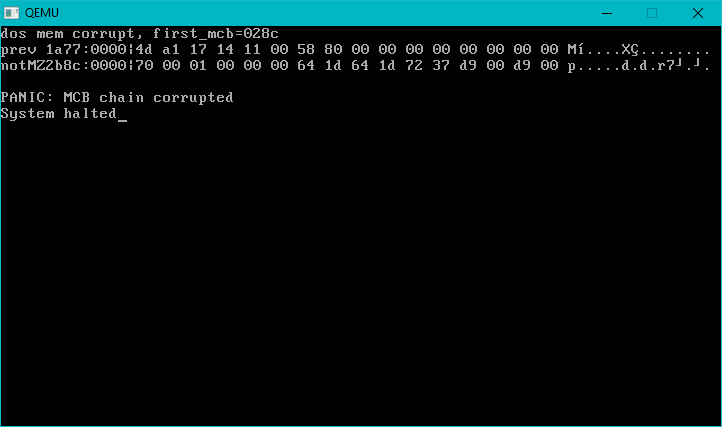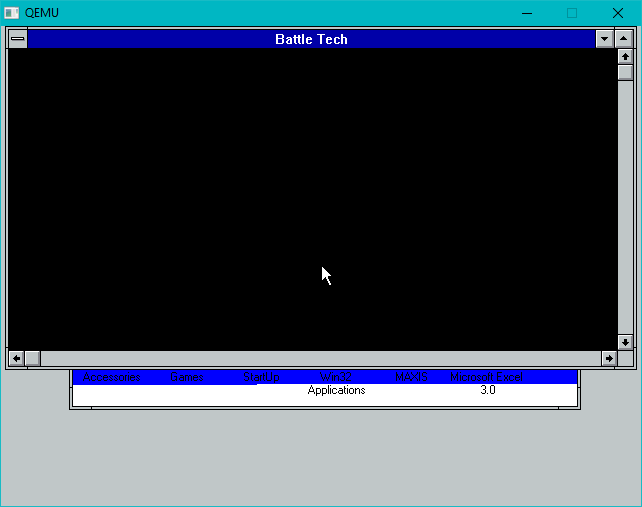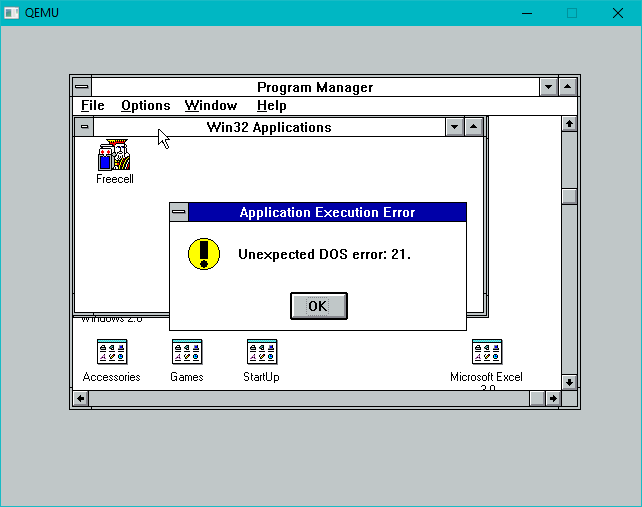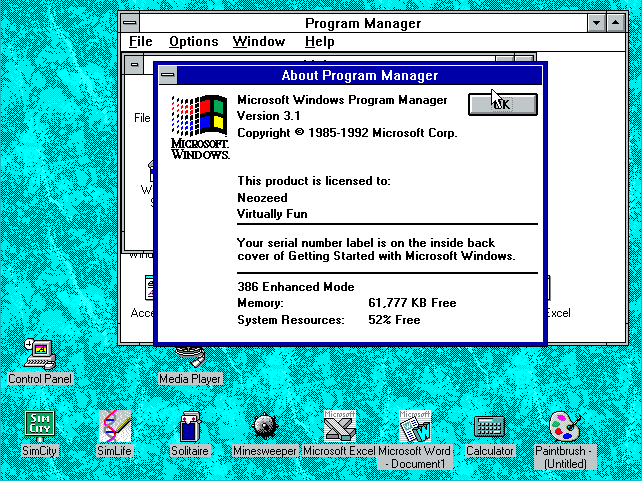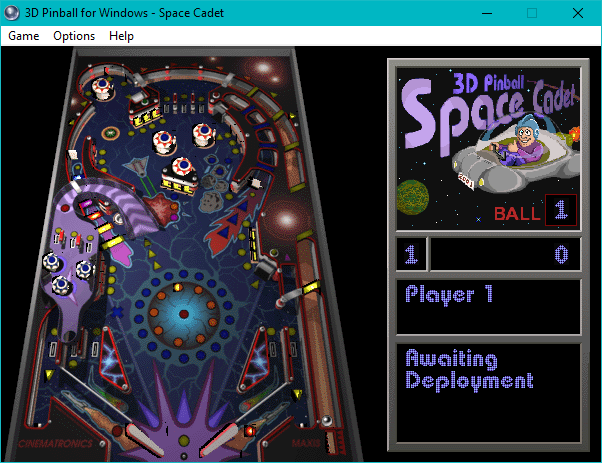What is it?
It sure may not look like much but it was an adventure getting here.
First, what is it? Well it’s the very simple NS32016 from here, with a few minor changes. I expanded the RAM from 256kb to a whopping 8MB. Then I added simple character I/O allowing me to print messages to the screen. Next looking at the toolchain page, I used my old Linux to Windows GCC 4 cross compiler to build the appropriate Canadian cross compiler to the NS3216.
Building the tools
A while back, I had built a cross compiler from Linux to Windows using GCC 4.1 as the basis as it was the last version that didn’t have massive external dependencies. NS32016 support was dropped some time in the late 3.x or early 4.x GCC so it means we need to go old anyways. I arbitrary picked GCC 2.8.1 for this build, while using the recommended Binutils 2.27
I cheated and just downloaded my existing linux-minw32.7z cross compiler as I didn’t feel like rebuilding everything again, although it is all in the Building a MIPS Compiler for Windows on a Linux VM! article. I also used an old Linux to Linux i586 32bit compiler (back from the OSKit build!) although you can use your hosts as well.
configuring Binutils is pretty simple like this:
./configure --prefix=/cross --target=ns32k-pc532-netbsd --host=i686-mingw32 --build=i586-linuxYou can try omitting the –build portion, Debian GNU Linux 10 seemed okay with Gcc 8 as the default system compiler.
configuring GCC 2.8.1 was pretty similar:
./configure --target=ns32k-pc532-netbsd --prefix=/cross --disable-libssp --build=i586-linux --host=i686-mingw32GCC 2.8.1 doesn’t quite know what we are doing so there is some flags we need to run off in auto-config.h namely
- #define HAVE_BCMP 1
- #define HAVE_BCOPY 1
- #define HAVE_BZERO 1
- #define HAVE_INDEX 1
- #define HAVE_KILL 1
- #define HAVE_RINDEX 1
- #define HAVE_SYS_RESOURCE_H 1
- #define HAVE_SYS_TIMES_H 1
You can just comment them out, or remove those lines all together.
When it came to building GCC, I did run into issues with GCC 7/8 trying to build GCC 2.8.1. I found it much easier to either have that Linux 4.1 compiler, or if you have access to Wine or WSL you can just run the Win32 binaries for the gen phases.
./configure --prefix=/cross --target=ns32k-pc532-netbsd --host=i686-mingw32
make CC=i686-mingw32-gcc xgcc cccp cc1 cc1objIf you can run your own Win32 exe’s on Linux it’ll run just fine using the Linux to Windows GCC 4 cross. Otherwise you will need to either patch GCC or make your own GCC 4 hosted Linux to Linux cross compiler like this:
make CC=i686-mingw32-gcc HOST_CC=i586-linux-gcc xgcc cccp cc1 cc1objHopefully that worked enough, and now you have your cross compiler. Now it’s time to build libgcc1.a
cp cccp cpp.exe
cp cc1 cc1.exe
cp xgcc xgcc.exe
cp ../binutils-2.27/gas/.libs/as-new.exe as.exe
cp ../binutils-2.27/binutils/.libs/ar.exe ar
cp ../binutils-2.27/binutils/.libs/ranlib.exe ranlib
make libgcc1.a TARGET_TOOLPREFIX="./" OLDCC=./xgcc.exeAgain you really want to be able to run the resulting programs on Linux but I guess you could script it out. Naturally if you wanted to just use Linux, it’d be easier to make that cross compiler directly, although I’m not sure how much of GCC 2.8.1 I want to fight, or just get GCC 4 running on Linux and use that to port.
crt0, somewhere for C to start
As mentioned a crt0.s is missing but there was enough inspiration to come up with this:
#NO_APP
gcc_compiled.:
.text
.align 1
.globl _start
_start:
enter [],0
#APP
# setting the stack 256k under 8MB
lprd sp,0x7c0000
jsr _main
#NO_APP
L1:
exit []
# setting the stack 256k under 8MB
lprd sp,0x7c0000
bpt
.align 1
#does nothing
.globl ___main
___main:
ret 0
.globl _exit
_exit:
bpt
ret 0I used a bit of the C example, and added some hooks that GCC was expecting namely a __main call that is made from main before it does anything (a place to init memory perhaps?), a place to catch an explicit exit call, along with setting the stack of course.
Patching InfoTaskForce without malloc / disk access
It’s not going to win any awards, but it was really great to get it to run a simple program written in GCC. Looking for something more fun, I took the old InfoTaskForce interpreter from ’87, and dug up my modification to run on cisco routers, and cooked up this version, that adds enough of printf from Linux, a bogus malloc that just allocates from a fixed memory array (otherwise you have to actually know about your platform), and a fun trick with later binutils where you can import a binary file directly as an object!
Neat!
Since I don’t have any file I/O being able to have the game data in RAM is crucial. I tried to tweak it so you could build the same working thing on Windows (maybe others?).
So for anyone who wants to look at the standalone adventure Win32 hosted tools are here, although the emulator should be somewhat portable.

